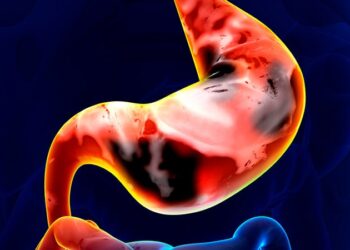TOPLINE:
Sedation peaked in the first 2 weeks in patients with acute phase schizophrenia receiving antipsychotic treatment, a study showed. About 50% of sedation cases resolved within 1 week, though 24% persisted beyond 4 weeks of treatment.
METHODOLOGY:
- This meta-analysis included individual data of 6791 participants (mean age, 38 years; 67% men) from 19 randomised, placebo-controlled trials of antipsychotic monotherapy, including long-acting injectable (LAI) formulations (n = 6 trials) and oral formulations (n = 13 trials), for acute phase schizophrenia and schizoaffective disorder.
- Researchers searched PubMed from inception until May 6, 2021, and obtained individual participant data through the Yale University Open Data Access (YODA) project to analyse sedation patterns.
- The probability of sedation onset and resolution over time after treatment initiation was assessed, with sedative adverse events defined using the Medical Dictionary for Regulatory Activities’ preferred terms: Sedation, somnolence, and fatigue.
TAKEAWAY:
- About 8.6% of participants had sedation events. Among individuals receiving antipsychotics, 83% of sedation cases occurred in the first 2 weeks of treatment initiation. About 50% of cases resolved in the first week, but at 4 weeks, sedation persisted in 24% of oral and 22.3% of LAI antipsychotic cases.
- The risk for sedation was higher with oral (adjusted hazard ratio [aHR], 2.44; 95% CI, 1.85-3.23) and LAI (aHR, 2.25; 95% CI,1.39-3.62) antipsychotics than with placebo. Oral quetiapine showed the highest risk for sedation (aHR, 4.36; 95% CI, 2.46-7.73), whereas oral paliperidone showed the lowest risk (aHR, 1.83; 95% CI, 1.34-2.51).
- LAI antipsychotics showed a lower cumulative incidence of sedation than oral formulations, with a slower onset and longer resolution time. Recovery was slower for oral (aHR, 0.73; 95% CI, 0.54-1.00) and LAI (aHR, 0.79; 95% CI, 0.46-1.37) antipsychotics than for placebo.
- Concomitant sedative drug use was associated with faster sedation resolution for oral antipsychotics (aHR, 1.34; 95% CI, 1.02-1.76), but no clear effects were found for LAI antipsychotics.
IN PRACTICE:
“Our present study indicates rapid onset and quick development of tolerance to sedative adverse events during antipsychotic treatment. Our results emphasise the need for careful monitoring of patients during the early treatment phase and suggest that additional factors, beyond the antipsychotic itself, should be considered if sedation persists for more than 1 month,” the authors wrote.
SOURCE:
The study was led by Nobuyuki Nomura, MD, PhD, Technical University of Munich, TUM School of Medicine and Health, Munich, Germany. It was published online in April 2025 in The Lancet Psychiatry.
LIMITATIONS:
Some Cox models showed evidence against proportional hazards assumption, suggesting time-varying drug effects and rapid tolerance acquisition. Post hoc analysis did not account for drug type and dose variability. Fixed-dose studies may have overlooked the impact of dose adjustments on sedation duration. A small number of sedation events for antipsychotics such as haloperidol may have reduced analytical robustness, and key drugs such as aripiprazole and clozapine were not included. Randomisation was not preserved in the resolution time analysis, potentially introducing confounding. The absence of individuals with lived experience may have limited applicability. Exclusion of studies not available in the YODA database may have introduced bias, and findings from randomised controlled trials were not generalisable to real-world settings.
DISCLOSURES:
The study was funded by the German Federal Ministry of Education and Research. Several researchers reported receiving fees or grants or having leadership roles in pharmaceutical and mental health research organisations. Details are provided in the original article.
This article was created using several editorial tools, including AI, as part of the process. Human editors reviewed this content before publication.
Source link : https://www.medscape.com/viewarticle/when-does-antipsychotic-sedation-peak-and-fade-2025a10007bj?src=rss
Author :
Publish date : 2025-03-28 12:00:00
Copyright for syndicated content belongs to the linked Source.














